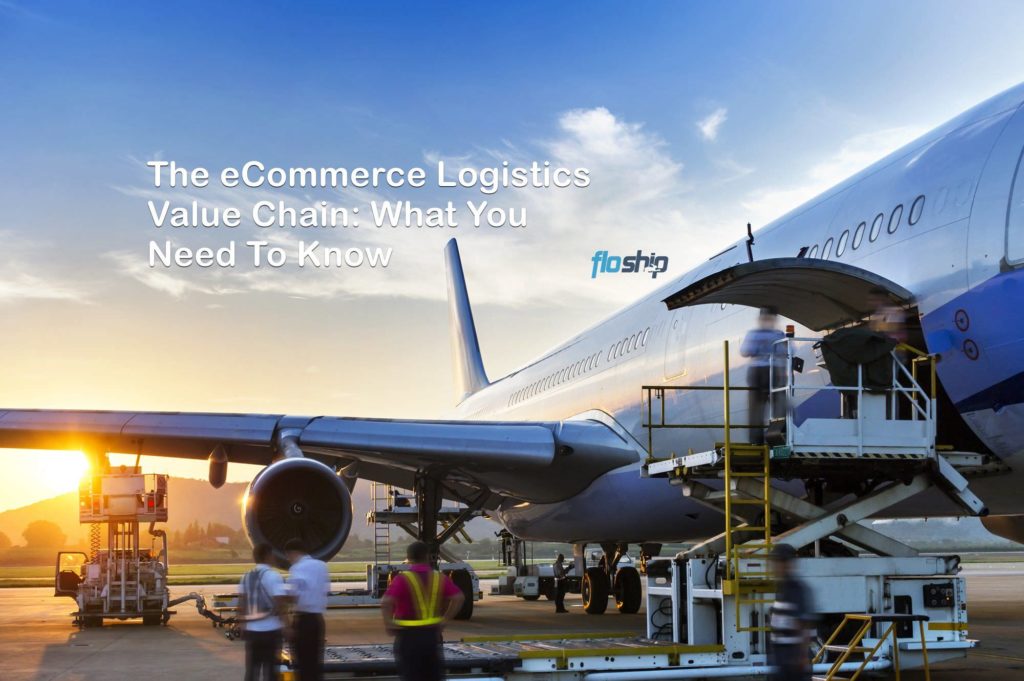There has been a lot of change in the logistics for consumer commerce over the past few decades.
These changes have meant that today’s businesses, which are more often than not eCommerce based, can now offer greater value to the customer while still making exceptional profits.
What are the changes that have happened and how can you take advantage of them to run a successful ecommerce business?
Old School Style
To understand the changes, the evolution of the value chain must be understood:

The story of evolution starts in the 1970s when most retailers took direct deliveries of goods from suppliers or wholesalers.
Then in the 1980s, retailers centralized their distribution1 network with centers that they controlled.
“1998 will be remembered as the year when the groundwork was laid out for business-to-business e-commerce.” (source:The Value of E-commerce)
Ten years later and the international market came into force. This meant in the 1990s, global sourcing for non-food products needed to take place at import centers that received and processed containerized goods.
Since then, the model has changed again with improved communications networks enabling innovative strategies like just in time production, the develop of robust distribution networks coupled with new systems created to optimize inventory levels.
E-retailers have started to lead the way:
Nearly 60% of all Americans are online shoppers and the sales aren’t dominated by just a few big players. While there might be a couple of big sellers, i.e. Amazon, there are also smaller retailers who even use sites like Amazon and EBay to sell their products to large audiences.
What this has led to is a scenario where the fulfillment and logistics chain has changed once again.
The New Value Chain
Now most e-retailers don’t have a large warehouse. The costs of running such a facility would be too high:
Instead, e-retailers are just online store fronts and the products are controlled and delivered by a third party that can do it more cost effectively.
There are often four different sections to the new process.
The first is the shop floor, i.e. the website. This is the e-commerce business.
Second is the Parcel Hub, this is where the order is packaged for the customer before it is moved on to, third, the sort center where all the orders are organized, based on their destination, and then, fourth, sent to the right Parcel Delivery Center before being delivered to the customer.

This can become complicated as more organizations are involved, which is why communication is essential.
The e-commerce model poses a significant challenge: order misplacement.
This is often because to get the best value in product supply and fulfillment services there are dozens of partners, multiple warehouses and numerous sales channels.
When orders are misplaced, it can lead to customer dissatisfaction that will inevitably lead to high customer churn.
Yet having these multiple centers is required. E-commerce merchants collect sales tax and the cost for fuel is higher than ever. Also the rise of free shipping, which is anything but free to you, is often the key to converting a customer.
Communication Between Partners
Communicating with your logistics team is vitally important. Some may prefer the old style phone or email service, but this is prone to the same misplacement challenges. Technology has provided the solution for many e-commerce businesses however.
By integrating shopping carts via API to a transportation management system, online customers can be given the exact price for shipping, if free is not offered.
The system should also offer:
- Tracking of orders with status and documentation
- Invoices
- Payment reminders
- Seamless interface with SCM and ERP systems
- Automated Email or SMS alerts for critical information
With this in place, you can start to see the value of working in a partnership as the costs of running an e-commerce business are reduced while the quality of the service you provide customers is improved.
Happy customers will return and likely increase their spending through your online store.
Find out how to Automate your Aftership Order Fulfillment Tracking process with the Aftership + Floship Integration here!
Conclusion: You and the E-commerce Value Chain
Unless you are a giant like Amazon, you aren’t going to have the resources to manage multiple distribution centers in key locations. Instead you should be looking to third party suppliers to help you reduce costs and provide a consistent service to all your customers.2
The last few decades have seen the onslaught of the internet and the even quicker adoption of smart phone technology which has unleashed a flood of opportunities while, at the same time, redefining what e-commerce means on almost a daily basis.
- Do you use a fulfillment partner in your eCommerce business?
- Is it a valuable part of your supply chain?
Find out how Floship can help you grow your e-commerce empire and keep your customers happy, contact us here.
Related Logistics for Online Sellers Posts
- Why Logistics Needs To Be A Partnership
- Logistics Isn’t Just About Trucks: It’s The Whole End to End
- Hong Kong Fulfillment: the Missing Piece in YOUR International eCommerce Strategy
- Packaging Alternatives to Protect Your Product

Ready To Upgrade Your Logistic Solution?
Speak to Floship ecommerce logistic consultant about improving your global support chain today




